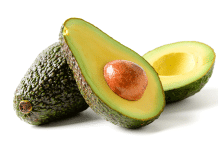What is Gluten ?
According to LiveScience.com, gluten are proteins found in cereal grain’s endosperm (a tissue produced inside the seeds of most flowering plants around the time of fertilization, they are ground to make flour). Gluten plays a major role in nourishing plants embryos at the time of germination and also affects the elasticity of dough, which in turn affects the chewiness of baked goods. The term Gluten came from Latin word gluten meaning “glue”. In this article we will teach you that What is Gluten .
Gluten proteins can be divided into two main fractions based on their solubility in aqueous alcohols:
- Gliadins
- Glutenins
Gliadins: Is a prolamin protein (storage protein), they are soluble in alcohols. Gliadins are monomeric proteins with molecular weights (Mws) around 28,000-55,000 and can be classified according to their primary structures into alpha/beta, gamma and omega types. Disulphide bonds are either absent oe present as intrachain crosslinks.
Glutenins: are glutelin proteins which are insoluble in alcohol. The glutenin fraction comprises aggregated proteins linked by interchain disulphide bonds; they have a varying size ranging from about 500,000 to more than 10 million. After reduction of disulphide bonds, the resulting glutenin subunits show solubility in aqueous alcohols similar to gliadins. Based on primary structure, glutenin subunits have been divided into the high-molecular-weight (HMW) subunits (MW=67,000-88,000) and low-molecular-weight (LMW) subunits (MW=32,000-35,000).
(Source: PubMed)
Gluten is mainly found in wheat, rye, barley and all their hybrids like triticale etc. Not all grains contain gluten. Some gluten free grains are brown rice, millet, sorghum etc. Oats are also gluten free but according to Lori Chong, a registered dietitian, it can be contaminated during processing.
Gluten is known to have viscoelastic properties; hence it is called the magical ingredient in baking. This remarkable stuff gives structure to baked goods, be it al dente pasta, fluffy waffles or chewy artisan breads, they all rely heavily on gluten for structure.
Most people have the ability to tolerate gluten, while others can be sensitive to this protein. According to National Foundation for Celiac Awareness, approximately 18 million Americans have gluten sensitivity. The term gluten sensitivity or gluten intolerance means that their bodies produce an abnormal response when breaking down gluten during digestion.
The most well-known form of gluten intolerance is Celiac disease. Celiac disease is an immunologically mediated inflammatory disorder of the small bowel occurring in genetically susceptible individuals and resulting from intolerance to wheat gluten and other similar products. The condition occurs worldwide but is more common in northern Europe.
The chronic gastrointestinal disorder called irritable bowel syndrome (IBS) is another condition that is affected by gluten. Dietitians explain that gluten grains are high in starches and sugars that can be easily fermented by intestinal bacteria hence causing bloating, cramping and diarrhea.
Those people who are intolerant to gluten are recommended gluten free diet. But in recent years more people have taken up gluten free diets. According to the Mayo Clinic, 80 percent of people on gluten free diet do not have celiac disease. Nutritionists are concerned, with more people adopting this life style; it could be detrimental to a person’s health because gluten free foods are often nutrient deficient.
© Doctor ASKY All rights are reserved. No part of this publication may be reproduced, stored in a retrieval system or transmitted in any form or by any means, electronic, mechanical, photocopying, recording or otherwise, without prior permission of DoctorASKY .




















